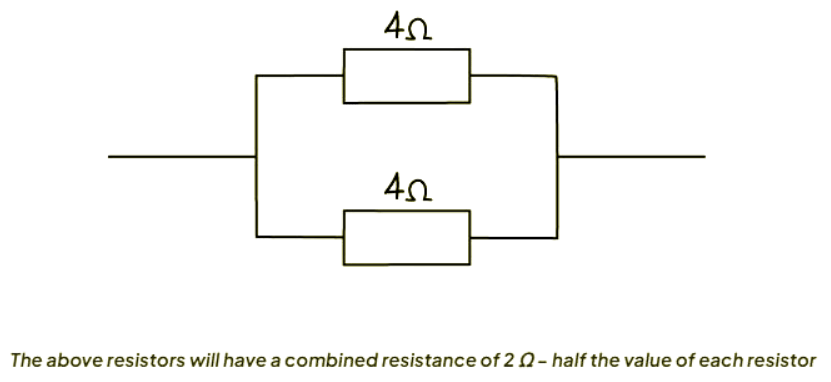Year 11 Exam > Year 11 Notes > Physics for GCSE/IGCSE > Combined Resistance
Combined Resistance | Physics for GCSE/IGCSE - Year 11 PDF Download
Resistors in Series & Parallel
Resistors in Series
- When components are connected in series, the total resistance is the sum of their individual resistances.
- The total resistance of components in series is the sum of their individual resistances.

Resistors in Parallel
- When resistors are connected in parallel, the overall resistance decreases and becomes less than the resistance of any individual component.
- If two resistors of equal resistance are connected in parallel, the combined resistance will be half of the resistance of each resistor.

Determining Resistance in Parallel
- When determining the combined resistance of any two resistors in a parallel setup, you can use the following equation:


- The above equation is not the same as R = R1 + R2 – a common, incorrect simplification that is made
- To calculate the resistance,
- first, find the value of 1/R by adding 1/R1 and 1/R2.
- Next, determine the value of R using the reciprocal button on your calculator (labeled either x-1 or 1/x, depending on your calculator).
Question for Combined ResistanceTry yourself: What happens to the overall resistance when resistors are connected in series?View Solution
The document Combined Resistance | Physics for GCSE/IGCSE - Year 11 is a part of the Year 11 Course Physics for GCSE/IGCSE.
All you need of Year 11 at this link: Year 11
|
127 videos|148 docs|35 tests
|
FAQs on Combined Resistance - Physics for GCSE/IGCSE - Year 11
| 1. What is the difference between resistors in series and resistors in parallel? |  |
Ans. In resistors in series, the total resistance is the sum of the individual resistances, while in resistors in parallel, the reciprocal of the total resistance is the sum of the reciprocals of the individual resistances.
| 2. How do you calculate the combined resistance of resistors in parallel? |  |
Ans. To calculate the combined resistance of resistors in parallel, you can use the formula: 1/RT = 1/R1 + 1/R2 + 1/R3 + ... 1/Rn, where RT is the total resistance and R1, R2, R3, etc. are the individual resistances.
| 3. Can resistors of different values be connected in parallel? |  |
Ans. Yes, resistors of different values can be connected in parallel. The total resistance will depend on the values of the individual resistors and how they are connected.
| 4. How does connecting resistors in series affect the total resistance? |  |
Ans. Connecting resistors in series increases the total resistance as the current has to pass through each resistor, leading to a higher overall resistance compared to a single resistor.
| 5. What happens to the current flowing through resistors in parallel? |  |
Ans. In resistors in parallel, the current splits up and flows through each resistor separately before combining again. The total current flowing through the parallel resistors is equal to the sum of the currents flowing through each individual resistor.

|
Explore Courses for Year 11 exam
|

|
Signup for Free!
Signup to see your scores go up within 7 days! Learn & Practice with 1000+ FREE Notes, Videos & Tests.
Related Searches
















